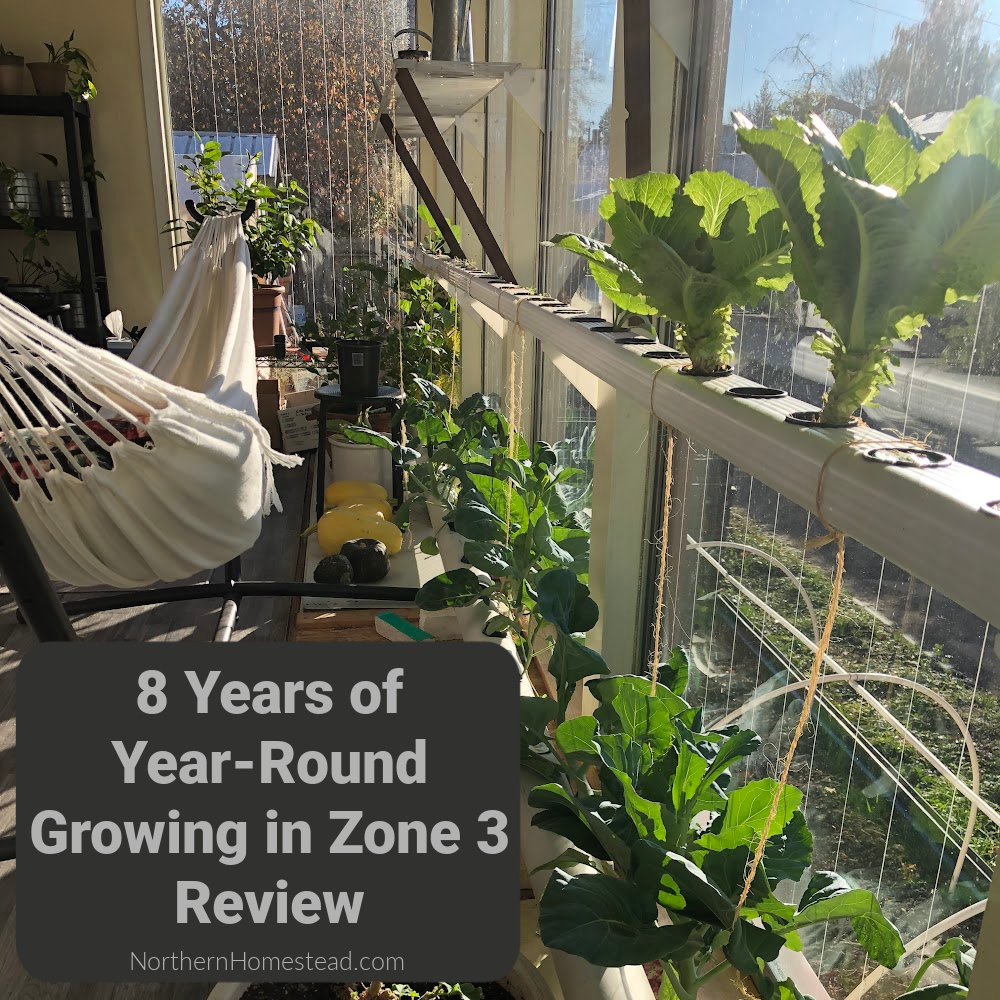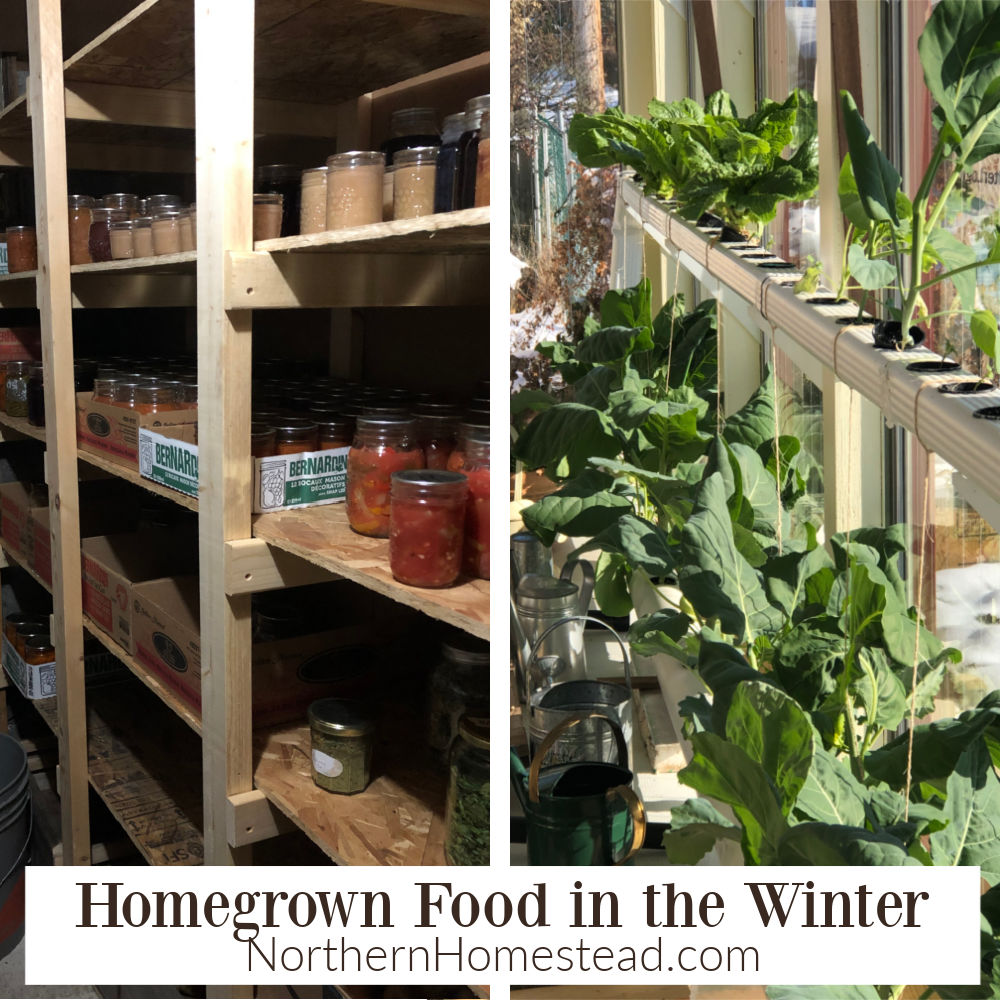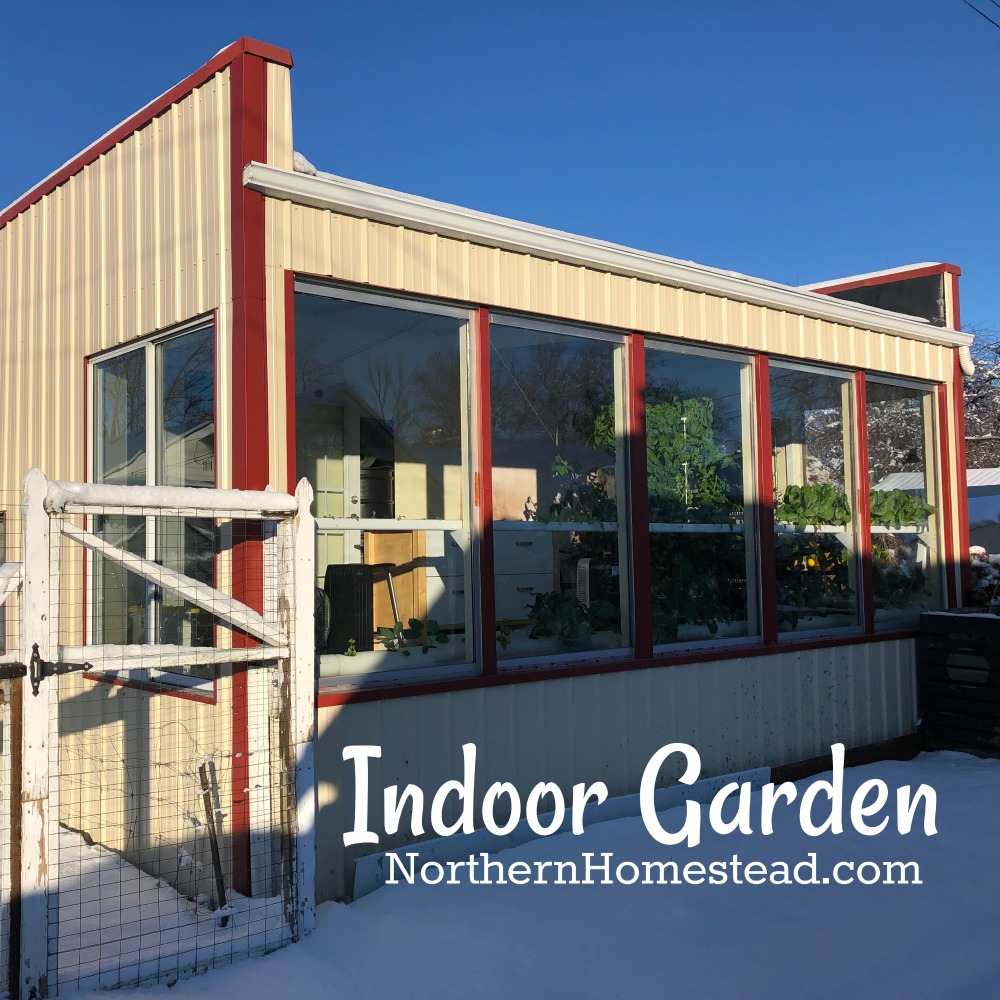
Every so often the question comes up on how we heat our indoor garden/greenhouse or why we heat the indoor garden with electricity.
For those that don’t know we are in the foothills of the Rocky Mountains in Alberta, Canada. It is cold here. We use our indoor growing room year-round. In the winter we mostly grow greens and cold weather crops, and in the summer tomatoes.
Living in Alberta our best heating source is solar energy. We get over 300 sunny days in a year and most of them are in the winter. The south-facing wall is all double-pane windows, plus a window on the east and a wide glass door on the west.

Even with very low winter sun, we still get 6+ sun-hours on most days.
Our indoor garden room is very well insulated, so on many sunny days, there is no need for any heating. Read more about the two top things to keep a greenhouse from freezing. It can easily be -25C outside and +20C indoors without any additional heat.
However, during nighttime and blizzard conditions, additional heat is required. We have tried many ways to heat the room, here is an overview of what didn’t work, and why we heat the indoor garden with electricity.
Heating with a rocket stove
Our first idea was to heat the room with a rocket stove. There is a lot of buzz about it, how great and economical a rocket stove is.
A rocket stove might be great and cozy in a cabin where you have lots of time to tend the fire to keep it going. After that, it will reward you for hours with comfortable heat.
In a greenhouse or growing room situation though, it is an extra chore to heat the stove. Plus the heat is not needed during the day when it would be maybe good to spend time in the greenhouse. Additional heat is mostly needed at night.
After trying it for a short time, we gave up on the idea. Unless you can automate the process, a rocket stove might just be the least suitable heating source for a greenhouse.
A rocket stove might just be the least suitable heating source for a greenhouse.
Sure, there are other ways to heat with wood, but there is a saying that if we all heated with wood, we would run out of wood on the planet in 5 years. We enjoy using our wood stove in the house for cozy nights, but wood is not a sustainable heat source.
Heating with propane and oil-fired heaters
The Oil Fired Heater is a real power machine in blizzard situations. The Mr. Heater Propane Heater is a great back up emergency heater. And we have also tried the Vent-free blue flame propane heater.
All propane heaters require proper ventilation.
Propane and oil fired heaters indoors without proper ventilation can be a carbon monoxide hazard, so we have to make sure no one is in the greenhouse to be affected by it.
We have also noticed that some plants react negatively in a propane heated room. Heating with propane requires ventilation.
Since insulation is the best way to keep a room warm, ventilation would do the opposite. During very cold winter days there is also no way we could open a window, it is all solid frozen.
Here is a video we made a few years ago to show you what’s like:
Heating with electricity
Electricity is a great invention, just plugin, and use. That’s about what heating with electricity is like.
We have used a stand oil-filled radiator heater as well as Electric Baseboard Heater both work very well.

We started with two Electric Baseboard Heaters on a thermostat, seeing it as a temporary option. It was easy to install and they performed fairly well. We thought though that we could find a more cost-efficient way to heat the growing room than electricity. Here is what we found out.

This was a real eye-opener for us, it actually costs us less to heat with electricity than with propane. This, of course, is unique to where we live. Your energy cost might be different.
Why are we not off-grid
Well, the next question might be burning in you, if heating with electricity works so well, shouldn’t we go off-grid?
We have thought about it, but after consulting with an honest specialist, we are staying on the grid.
Going off-grid would not reduce cost, just give us a sense of security. Most people who go off-grid do so for personal or moral reasons. We are more rational people.
That being said, we do have a generator for back up electricity. And we dream of free energy for all.
Natural gas
Last, not least we do want to address natural gas, the most common heating source in our area. Our house is heated with natural gas. It is the most cost-efficient heating source as long as it is available as a reliable heating source.
The installation and start-up cost for natural gas is high, however. To install a line and a furnace in an old building does not seem to be very economical. However, if we were to start anew with a shop and attached a passive solar greenhouse, we maybe would consider it.
We would love to hear from you if you have experience in heating a greenhouse or growing room.
We invite you to subscribe to Northern Homestead and follow us on Instagram, Facebook or Pinterest for the latest updates.
More posts you might enjoy












Going off-grid would not reduce cost, just give us a sense of security. Most people who go off-grid do so for personal or moral reasons. We are more rational people…what do you mean by this? Thank you
It is pricier to be off-grid, it also is debatable if it is better for the environment, depending on how much of the batteries and solar system is recyclable. There still is a good reason to be off-grid, if you live in a place with none or unreliable grid connection. That’s not the case for us, we have a reliable grid.
Hi,
We live just south of Calgary, and have just completed a small northern climate greenhouse. We have put R15 vertical insulation in to 4ft below ground and laid a manifold of pipework underground at the 4 feet level to blow air through. The walls are R12 and the ceiling/roof is R22.
We have three 205L black barrels that will be filled with water (or brine) to act as thermal mass. (I’d like more, but there’s not enough space).
I suspect that I am going to need some supplemental heating.
I was interested to read that you’re using electric heat, and noted your table of comparative costs for wood, LPG, electricity and natural gas.
Have you attempted to quantify how much electricity you are using in your indoor garden? If so, would you be able to share the information? If you have it broken down by month, that would be even more useful.
Your website looks to be a mine of information, and I look forward to reading many more of your articles.
Nice to hear from fellow gardeners in our area. No, we have not attempted to quantify the electricity consumption. Actually, at the onset of this winter, we put natural gas in the garage at a reasonable price. That of course is a game-changer.